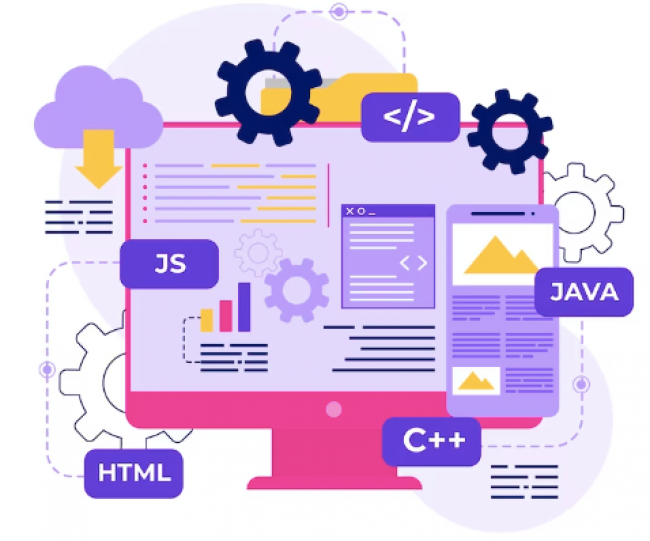
Introduction
Operating systems (OS) are the backbone of any computer system, responsible for managing the hardware and software resources of a device. One of the key tasks of an OS is memory management, which ensures that the computer's memory is used efficiently and effectively. One technique used to achieve this goal is segmentation. In this article, we will discuss what segmentation is, how it works, and its advantages and disadvantages.
What is Segmentation?
Segmentation is a method of memory management in which memory is divided into sections or segments. Each segment is a distinct area of memory that is used to store a specific type of data or information. For example, a segment might be used to store a program's code, another segment to store its data, and yet another segment to store its stack.
When a program in C or any other programming language exceeds these segment boundaries, it can result in a segmentation fault, also known as a segfault. A segmentation fault in C is a specific type of error caused by accessing memory that the program is not authorized to access. This can happen when a program tries to read or write to a memory location outside of its allocated memory segment.
How does Segmentation Work?
In segmentation, the memory is divided into segments of varying sizes, with each segment being assigned a unique identifier or "name". When a program is loaded into memory, the OS uses the program's segment names to locate and assign the appropriate segments of memory to the program. This allows the OS to keep track of where each program's data and code is located in memory, and makes it easy to allocate and deallocate memory as needed.
Advantages of Segmentation in Operating Systems:
Memory Management:
Paged segmentation in OS allows for more efficient use of memory by breaking it down into fixed-size pages, which are easy for the operating system to handle. This makes it simpler for the operating system to allocate, deallocate, and protect memory, improving the overall performance of the system.
Protection:
Segmentation allows the operating system to protect different parts of memory from unauthorized access. By assigning different access levels to different segments, the operating system can ensure that only authorized programs and processes can access sensitive information.
Flexibility:
Segmentation allows for greater flexibility in allocating memory to different tasks. As the size and number of segments can be adjusted dynamically, the operating system can more easily allocate memory resources to the most important tasks.
Sharing:
Segmentation allows for multiple processes to share a single segment of memory. This can be useful for sharing common data structures between different programs, such as a shared library or a shared file.
Error Detection:
Segmentation enables the detection of memory errors by using a segment table for memory reference, it can be checked before the memory is accessed. This prevents the program from causing errors in other parts of memory and crashing the system.
Isolation:
Segmentation also provides the feature of isolation, where the address space of one process or program is kept separate from the address space of another process or program. It allows for better stability and security by isolating different parts of the system from one another.
Modularity:
Segmentation allows for greater modularity in program design. By dividing a program into separate segments, each with a specific function, it is easier to write, test, and maintain the code. This makes it easier to update and modify specific parts of a program without affecting the rest of the code.
Virtual Memory:
Segmentation plays a vital role in the implementation of virtual memory in operating systems. Virtual memory allows the operating system to use disk storage as an extension of physical memory. The operating system can move segments that are not currently in use to disk storage, making more memory available for the active segments.
Efficient Resource Allocation:
Segmentation enables the operating system to efficiently allocate system resources such as CPU time and memory to different tasks. By allocating resources to the most important tasks, the operating system can improve the overall performance of the system.
Improved Multitasking:
Segmentation allows for better multitasking by allowing multiple programs to run simultaneously and share memory resources. This improves the overall responsiveness of the system and allows for more efficient use of system resources.
Better Utilization of hardware
By dividing the memory, the operating system can utilize the hardware in a more efficient way. By using segmentation, the operating system can allocate memory resources more effectively and efficiently to optimize system performance. This can result in a significant improvement in system performance compared to non-segmented systems.
Disadvantages of Segmentation in Operating Systems:
Complexity:
Segmentation adds an extra layer of complexity to the memory management process. The operating system must maintain a segment table, which can add to the overall complexity of the system and increase the chances of errors.
Overhead:
Segmentation incurs additional overhead in terms of memory and CPU time. The operating system must spend additional resources maintaining the segment table and managing the segmentation process. This can result in a reduction in system performance.
Fragmentation:
Segmentation can lead to fragmentation of memory, where small, unused segments of memory are left scattered throughout the system. This can result in wasted memory resources and can make it more difficult for the operating system to allocate memory to new tasks.
In conclusion, segmentation is a memory management technique used in operating systems to divide memory into smaller, variable-sized segments. Each segment can have a unique name and is assigned a specific set of permissions and access rights. This allows the operating system to utilize memory resources and protect sensitive information more efficiently. One variation of segmentation is Paged Segmentation, which divides memory into fixed-size pages and uses a page table to map virtual memory addresses to physical memory locations. Segmentation provides many advantages in terms of memory management, protection, flexibility, sharing, error detection, virtual memory, and resource allocation.
















